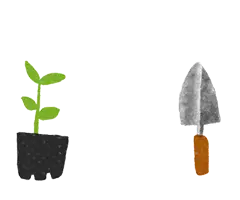Part 6Miscellaneous
38Hunting, etc
The Director-General may,—
- if it is in accordance with the management plan (if any) of a conservation area; and
- having had regard to the safety of members of the public who are likely to be in the area, or any part of it, or any other land near the area,—
A permit may be issued under subsection (1) either unconditionally or subject to any conditions the Director-General thinks fit.
The Director-General may charge for the issue of a permit under subsection (1) any fee not exceeding the appropriate proportion of the costs of administering the issue of such permits.
Every person commits an offence against this Act who, knowingly and without a permit in that behalf issued under subsection (1) or section 26ZZH, or knowingly and otherwise than in compliance with any conditions subject to which such a permit has been issued,—
- discharges any hunting weapon on, into, or over any conservation area; or
- molests or pursues any animal in a conservation area; or
- captures, kills, poisons, tranquillises, traps, or immobilises by any means, any animal in a conservation area; or
- has in possession in any conservation area any animal or animal product; or
- whether or not any animal or animal product is taken, takes or uses in or over any conservation area any aircraft, dog, hunting weapon, net, trap, poison, ship, snare, or vehicle, for the purpose of molesting, pursuing, capturing, killing, poisoning, tranquillising, trapping, or immobilising, by any means, any animal; or
- takes any animal product in a conservation area; or
- whether or not any animal product is taken, takes or uses in or over any conservation area any aircraft, dog, net, trap, ship, or vehicle, for the purpose of taking any animal product; or
- enters any conservation area with a hunting weapon, net, trap, or snare, or with poison; or
- sets any net, trap, or snare, on any conservation area; or
- allows any animal to molest, pursue, or kill, any animal, in a conservation area.
Nothing in subsection (4) applies to any fish.
Every person commits an offence against this Act who uses, receives, sells, or otherwise disposes of any animal or animal product, knowing it to have been taken in contravention of subsection (4).
Evidence that any person was found in any conservation area in possession of any animal, animal product, natural resource, or plant, capable of being captured or taken in that area shall, for the purposes of proceedings under this section or section 39, be evidence that the person captured or took it in the area.
In any such proceedings, the averment that any land is a conservation area shall be sufficient without proof of the fact, unless the defendant proves to the contrary; and all plans, maps, leases, licences, certificates, and copies certified as true under the hand of the Director-General or Chief Surveyor shall be sufficient evidence of their contents without production of original records and without the personal attendance of those officers or proof of their signatures, unless the defendant adduces evidence to the contrary and the interests of justice requires the attendance of one of the officers.
Notes
- Section 38(4): amended, on , by section 4 of the Conservation Amendment Act (No 2) 1996 (1996 No 14).
- Section 38(4)(e): amended, on , by section 26 of the Statutes Amendment Act 2016 (2016 No 104).
- Section 38(4)(g): amended, on , by section 26 of the Statutes Amendment Act 2016 (2016 No 104).


